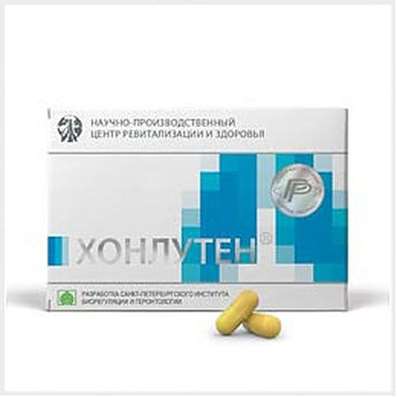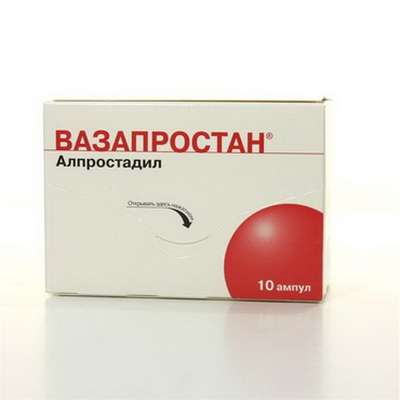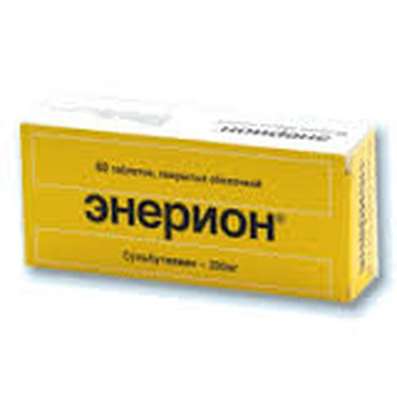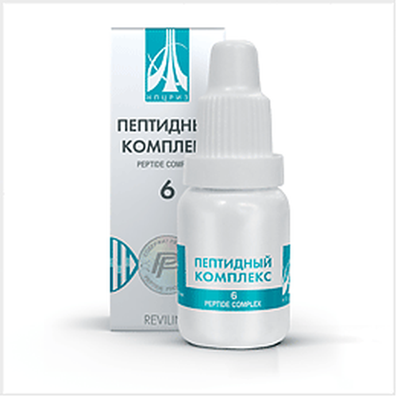Instruction for use: Rinsulin R
I want this, give me price
ATX Code A10AB01 Insulin human
Active substance Insulin soluble [human biosynthetic]
Pharmacological group
Hypoglycemic agent - short-acting insulin [Insulins]
Nosological classification (ICD-10)Z31.1 Artificial insemination
E10 Insulin-dependent diabetes mellitus
Decompensation of carbohydrate metabolism, Diabetes mellitus, Diabetes insulin sugar, Diabetes mellitus type 1, Diabetic ketoacidosis, Insulin-dependent diabetes, Insulin-dependent diabetes mellitus, Coma hyperosmolar non-ketoacidotic, Labile form of diabetes mellitus, Violation of carbohydrate metabolism, Type 1 diabetes mellitus, Type I diabetes mellitus, Insulin-dependent diabetes mellitus, Type 1 diabetes mellitus
E11 Non-insulin-dependent diabetes mellitus
Acetonuric diabetes, Decompensation of carbohydrate metabolism, Diabetes insulin-independent sugar, Diabetes sugar type 2, Type 2 Diabetes, Non-insulin-dependent diabetes, Non-insulin dependent diabetes mellitus, Non-insulin-dependent diabetes mellitus, Insulin resistance, Insulin resistant diabetes mellitus, Coma lactobacillus diabetic, Violation of carbohydrate metabolism, Type 2 diabetes mellitus, Diabetes mellitus type II, Diabetes mellitus in adulthood, Diabetes mellitus in old age, Diabetes insulin-independent, Diabetes mellitus type 2, Sugar insulin-independent diabetes type II
O24 Diabetes mellitus during pregnancy
Pregnancy in diabetes mellitus, Diabetes mellitus type 2 in pregnant women
Composition
Solution for injection 1 ml
active substance:
Human insulin 100 IU
Auxiliary substances: metacresol - 3 mg; Glycerol (glycerol) - 16 mg; Water for injection - up to 1 ml
Description of dosage form
Colorless transparent liquid.
Characteristic
Rinsulin® R is a human insulin obtained using recombinant DNA technology.
pharmachologic effect
Pharmacological action - hypoglycemic.
Pharmacodynamics
Short-acting insulin.
Interacts with a specific receptor of the outer cytoplasmic cell membrane and forms an insulin-receptor complex that stimulates intracellular processes, incl. Synthesis of a number of key enzymes (hexokinase, pyruvate kinase, glycogen synthetase). Reducing blood glucose is due to increased intracellular transport, increased absorption and assimilation by tissues, stimulation of lipogenesis, glycogenesis, a decrease in the rate of glucose production by the liver. The duration of action of insulin preparations is mainly due to the rate of absorption, which depends on several factors (for example, the dose, method and site of administration), and therefore the profile of insulin activity is subject to significant fluctuations in both individuals and in the same person.
On average, after sc administration, the drug begins to act after 30 minutes, the maximum effect develops between 1 and 3 hours, the duration of action is 8 hours.
Pharmacokinetics
Completeness of absorption and the beginning of the effect of insulin depends on the mode of administration (SC, IM, IV), the injection site (abdomen, thigh, buttocks), the dose (volume of insulin administered), the concentration of insulin in the preparation, etc. Distributed The tissues are uneven; Does not penetrate the placental barrier and into breast milk. It is destroyed by insulinase mainly in the liver and kidneys. T1 / 2 - a few minutes. It is excreted by the kidneys (30-80%).
Indications
Diabetes mellitus type 1;
Type 2 diabetes mellitus: the stage of resistance to oral hypoglycemic agents, partial resistance to these drugs (with combined therapy), intercurrent diseases;
Diabetes mellitus type 2 in pregnant women;
Urgent conditions in patients with diabetes mellitus, accompanied by decompensation of carbohydrate metabolism.
Contraindications
Increased individual sensitivity to insulin or any of the components of the drug;
Hypoglycemia.
pregnancy and lactation
There are no restrictions on the treatment of diabetes mellitus with insulin during pregnancy. Insulin does not penetrate the placental barrier. When planning pregnancy and during it, it is necessary to intensify the treatment of diabetes. The need for insulin usually decreases in the first trimester of pregnancy and gradually rises in the II and III trimesters. During and immediately after delivery, the need for insulin can dramatically decrease. Shortly after birth, the need for insulin quickly returns to the level that was before pregnancy.
There are no restrictions on the treatment of diabetes mellitus with insulin during breastfeeding. However, it may be necessary to reduce the dose of insulin, so careful monitoring is necessary for several months before the insulin needs stabilize.
Side effects
Due to the effect on carbohydrate metabolism: hypoglycemic conditions (pallor of the skin, increased sweating, palpitation, tremor, hunger, agitation, paresthesia (oral mucosa) in the mouth, weakness, headache, dizziness, decreased visual acuity). Pronounced hypoglycemia can lead to the development of hypoglycemic coma.
Allergic reactions: rarely - skin rash, Quincke's edema, extremely rarely - anaphylactic shock.
Local reactions: hyperemia, swelling and itching at the injection site, with prolonged use - lipodystrophy at the injection site.
Other: swelling, transient decreases in visual acuity (usually at the beginning of therapy).
If the patient noted the development of hypoglycemia or had an episode of loss of consciousness, he should immediately inform the doctor about it.
When identifying any other side effects not described above, as the patient should seek medical attention.
Interaction
There are a number of drugs (medicines) that affect the need for insulin. Hypoglycemic action of insulin enhances oral hypoglycemic drugs, MAO inhibitors, angiotensin converting enzyme inhibitors, carbonic anhydrase inhibitors, non-selective β-adrenoblockers, bromocriptine, salicylates, sulfonamides, anabolic steroids, tetracyclines, clofibrate, ketoconazole, mebendazole, pyridoxine, theophylline, Cyclophosphamide, fenfluramine, lithium preparations, preparations containing ethanol. Hypoglycemic action of insulin weakens glucagon, somatropin, estrogens, oral contraceptives, glucocorticosteroids, iodine-containing thyroid hormones, thiazide diuretics, heparin, tricyclic antidepressants, sympathomimetics, danazol, clonidine, epinephrine, H1-histamine receptors blockers, calcium channel blockers, , Diazoxide, morphine, phenytoin, nicotine.
Β-adrenoblockers can mask symptoms of hypoglycemia and hamper recovery after hypoglycemia. Octreotide / lanreotide can both increase and decrease the body's need for insulin. Ethanol (alcohol) can enhance or reduce the hypoglycemic effect of insulin.
Incompatibility
The effects of mixing human insulin with animal insulin or human insulin produced by other manufacturers have not been studied.
Dosing and Administration
P / to, in / m (intramuscularly) and intravenously (intravenously). The dose and route of administration of the drug are determined by the physician individually in each case, based on the level of glucose in the blood.
On average, the daily dose of the drug ranges from 0.5 to 1 IU / kg (depends on the individual characteristics of the patient and the concentration of blood glucose).
The daily requirement for insulin can be higher in patients with insulin resistance (for example, during puberty, as well as in obese patients), and lower in patients with residual endogenous insulin production.
Correction of the dose
The dose of insulin must be corrected in case of thyroid dysfunction, Addison's disease, hypopituitarism, liver and kidney dysfunction and diabetes mellitus in people over 65 years of age.
Correction of the dose of insulin may also be required if the patient increases the intensity of physical activity or changes the habitual diet.
Concomitant diseases, especially infections and conditions accompanied by fever, increase the need for insulin.
Elderly patients who use any insulin, including Rinsulin® R, are at increased risk of hypoglycemia due to the presence of concomitant pathology and simultaneous production of several drugs. This may necessitate adjusting the dose of insulin. Patients with impaired renal and hepatic function are at increased risk of hypoglycemia and may need a more frequent adjustment of insulin dose and rapid monitoring of blood glucose.
The drug is administered 30 minutes before a meal or a light snack containing carbohydrates.
The temperature of the injected insulin should be at room temperature.
When monotherapy with the drug, the frequency of administration is 3 times a day (if necessary, up to 5-6 times a day). At a daily dose exceeding 0.6 IU / kg, it is necessary to inject 2 or more injections into different areas of the body.
The drug is usually injected into the anterior abdominal wall. Injections can also be done in the thigh, buttock or shoulder area in the projection of the deltoid muscle.
When the drug is injected into the anterior abdominal wall, a faster absorption is achieved than when injected into other areas.
It is necessary to constantly change the injection site within the anatomical area to prevent the development of lipodystrophy. With n / to the introduction of insulin, care must be taken so that when injected do not get into the blood vessel. After injection, do not massage the injection site. Patients should be trained in the correct use of the insulin delivery device.
In / m the drug can be administered only as directed by a doctor. In / in the introduction of the drug can be carried out only by a medical professional.
Cartridges can only be used if their contents are a clear, colorless liquid with no visible particles. Do not use the drug if a precipitate appears in the solution.
The device of cartridges does not allow to mix their contents with other insulins directly in the cartridge. Cartridges are not intended to be refilled.
When using cartridges, follow the manufacturer's instructions for refilling the cartridge in the syringe pen and attaching the needle. The drug should be administered in accordance with the manufacturer's instructions for the syringe pen.
After insertion, it is necessary to unscrew the needle using the outer needle cap and immediately destroy it safely. Removing the needle immediately after injection provides sterility, prevents leakage, air ingress and possible clogging of the needle. Then put the cap on the handle.
When using pre-filled multi-dose disposable syringe pens for multiple injections, before using for the first time, remove the syringe pen from the refrigerator and allow the drug to reach room temperature. It is necessary to follow the exact instructions of the instructions for using the syringe-pen supplied with the drug.
Rinsulin® R in a syringe pen can not be used if it has ceased to be clear and colorless, or if it has been frozen.
The Rinsulin® P preparation in the syringe pen and needle is for individual use only. Do not refill the syringe pen cartridge.
Needles should not be reused.
To protect from light, the syringe pen should be closed with a cap.
Do not store the used syringe pen in the refrigerator.
The Rinsulin® P preparation is a short-acting insulin and is usually used in combination with medium-duration insulin (Rinsulin® NPH).
The drug should be stored at room temperature (15 to 25 ° C) for no longer than 28 days.
Using cartridges using reusable syringes
Cartridges with Rinsulin® R can be used with multiple-use syringes:
- syringe pen Autopen Classic (Autopen Classic 3 ml 1 Unit (1-21 units) AN3810, Autopen Classic 3 ml 2 Unit (2-42 units) AN3800) manufactured by Owen Mumford Ltd., United Kingdom;
- pen injectors for the administration of insulin HumaPen® Ergo II and "HumaPen® Luxe" manufactured by Eli Lilly and Company, USA;
- an Optipen® Pro1 syringe pen manufactured by Aventis Pharma Deutschland GmbH, Germany;
- Syringe-pen BiomatikPen® manufactured by Ipsomed AG, Switzerland.
It is necessary to follow the instructions for using the syringe pens provided by the manufacturers.
Overdose
Symptoms: hypoglycemia may develop.
Treatment: mild hypoglycemia, the patient can eliminate himself by taking sugar or carbohydrate-rich foods inside. Therefore, patients with diabetes are encouraged to always carry sugar, sweets, cookies or sweet fruit juice.
In severe cases, if the patient lost consciousness, IV / 40 injected a solution of dextrose (glucose); In / m, p / to, in / in - glucagon. After restoration of consciousness the patient is recommended to take food rich in carbohydrates, to prevent the repeated development of hypoglycemia.
special instructions
On the background of insulin therapy, a constant control of the concentration of glucose in the blood is necessary.
The causes of hypoglycemia in addition to an overdose of insulin may include: drug substitution, skipping meals, vomiting, diarrhea, increased physical activity, diseases that reduce the need for insulin (liver and kidney function disorders, hypofunction of the adrenal cortex, pituitary gland or thyroid gland), injection site change, As well as interaction with other drugs.
Incorrect dosing or breaks in the introduction of insulin, especially in patients with type 1 diabetes, can lead to hyperglycemia. Usually, the first symptoms of hyperglycemia develop gradually, over several hours or days. They include the appearance of thirst, increased urination, nausea, vomiting, dizziness, redness and dryness of the skin, dry mouth, loss of appetite, the smell of acetone in the exhaled air. If not treated, hyperglycemia in type 1 diabetes can lead to the development of life-threatening diabetic ketoacidosis.
In view of the increased risk of cardiac and cerebral complications of hypoglycemia, it is necessary to use the drug with caution in patients with severe stenosis of the coronary and cerebral arteries. The drug should be used with caution in patients with proliferative retinopathy, especially those who do not receive photocoagulation (laser coagulation) because of the risk of amaurosis (complete blindness). Transfer of the patient to a new type of insulin or an insulin preparation of another manufacturer should be carried out under the supervision of a doctor.
With the use of insulin preparations in combination with preparations of the thiazolidinedione group in patients with type 2 diabetes mellitus, fluid retention in the body may occur, which increases the risk of development and progression of CHF, especially in patients with CVD and the presence of risk factors for CHF. Patients receiving this therapy should be screened regularly for signs of heart failure. When heart failure occurs, her therapy is carried out in accordance with current treatment standards. It is necessary to consider the possibility of removing thiazolidinedione or reducing its dose.
Influence on the ability to drive vehicles and work with machinery. In connection with the primary appointment of insulin, a change in its type or in the presence of significant physical or mental stress, it is possible to disrupt the ability to drive vehicles or various mechanisms, as well as engage in other potentially dangerous activities requiring increased attention and speed of mental and motor reactions.
Form of issue
Solution for injection 100 IU / ml. For 3 ml of the drug in glass cartridges with rubber rubber plugs, (rolled in) ukuporennyh combined caps of aluminum with a rubber disc.
1. 5 cartridges are placed in a contour mesh box made of PVC film and foil of aluminum printed lacquered. 1 contour squamut package is placed in a pack of cardboard.
2. Cartridge, mounted in a plastic multi-dose disposable syringe pen for multiple injections of Rinastra. Five pre-filled multidose disposable syringe pens for multiple injections of Rinastra together with instructions for using the syringe handle of Rinastra are placed in a pack of cardboard.
Terms of leave from pharmacies
On prescription.
storage conditions
In the dark place at a temperature of 2-8 ° C (do not freeze).
Keep out of the reach of children.
Shelf life
2 years.
Do not use after the expiry date printed on the package.

 Cart
Cart





